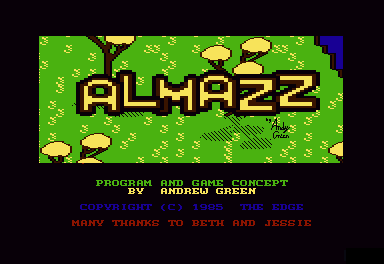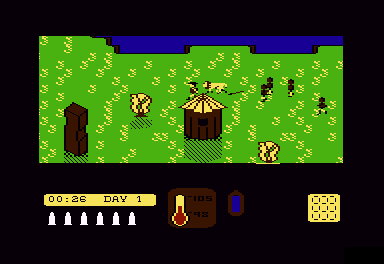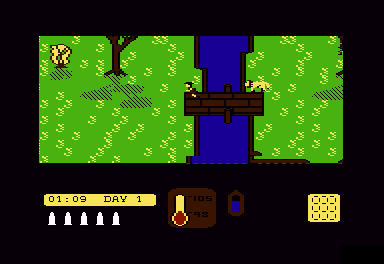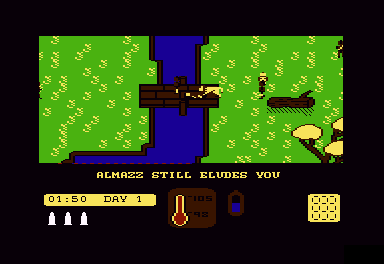Glass Ceiling
Graphic and game design by Wendy Carmical, project management and game design by Maura Sparks.
It's written in C++ using OpenGL, and thus is completely portable between iOS, Android and OSX.
Graphic and game design by Wendy Carmical, project management and game design by Maura Sparks.
It's written in C++ using OpenGL, and thus is completely portable between iOS, Android and OSX.

In this enhanced version of SPARKvue sensors are tagged with fiduciary markers. The video from a camera pointed at the experimental setup is shown beneath normal UI elements, and measurements from sensors are drawn into the video as it runs.

So what happens when bodies of code collide? Well, we end up with ad hoc transference of information from one representation to another, and chunks of code using a rich representation just look different from chunks using something more primitive.
In ZooLib I made several attempts at creating a clean suite of cartesian types and operations, with conversion operators and constructors, pseudo constructors and miscellaneous helper functions. But the approach just never scaled well.
Recently I've taken a very different tack. In ZCartesian I've defined a suite of template accessor functions -- passed a rectangle/point the edges, corners and centers can be extracted. Offsetting and aligning operations build on those accessors, as do sensible algebraic operators.
The accessor functions themselves forward to functions defined in traits templates. There's a suite of base classes for rectangles that are defined by variations of origin/extent or left/top/right/bottom. Supporting a new suite of cartesian types can be as simple as providing the definition of a traits class inheriting from one of the provided bases.
In this way we can work with NSRect, CGRect, XRectangle, QuickDraw Rect, Windows Rect, SDL_Rect, and their associated point (and size) structures using identical notation. And when we need to switch representations there's just a single pseudo-constructor to do the job.
Electric Magic implemented the Mac-specific portions of the Zorap web plugin, supporting Safari, Firefox and other modern web browsers.
Under the hood KF 4.6 has moved from using ZDBase for its backing store, instead using a tuplebase. This makes it possible to split HTML page generation into separate processes, potentially running on multiple front end machines. It also restores support for a rich client application, now written in Java, using ZTSoup to efficiently communicate changes in the tuplebase, whether made by other clients or by the web interface.
New features included support for upload and download of files as attachments to views and notes, headings within views, full text and attribute-based searches, and notification by email. It also supported graphs of useful metrics, implemented across platforms using ZDC_ZooLib.
On the back end, a significant change was moving from the original blockstore implementation to one based on B+Trees that uses a neat upward propagting copy-on-write of nodes to make it virtually bullet-proof - only a physical failure of the backing store can cause data loss.
ZDCPixmapBlit uses templates to generate the code for source/destination and source/matte/destination blitting, matte/destination filling, and destination-only munging, using the four Porter/Duff composition operators Copy, Over, In and Plus.
It was thus relatively straightforward to implement ZFakeWindow_NSPlugin, which translates between the Netscape browser plugin and the ZFakeWindow APIs. What was actually more difficult was finding a decent implementation of the plugin glue code and header files. In 2002 there wasn't anything that would work with current compilers and with current browsers, so most of the effort was in putting together ZNSPlugin, which is a usable implementation of the glue.
ZooLib defines and implements a graphics API that produces identical results across all supported platforms. It is geared towards creating user interface elements and so is pixel-based rather than geometric so that a programmer can know precisely which pixels will be touched by a drawing operation. It supports pixel-plotting, lines of any thickness, text, rectangles, rounded rectangles, ovals, arbitrary regions and the drawing of masked-pixmaps. ZDC_ZooLib is an implementation of this API using no OS facilities at all, and thus can be used in server applications without the difficulties that normally poses (gaining access to a window or graphics server from a low-privilege process).
The implementation uses operations on ZBigRegion instances to decide which pixels to touch, decomposes the regions into rectangles and then calls ZDCPixmapBlit to actually do the work.
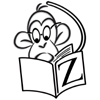
ZooLib abstracts threads, files, networking, graphics and the user interface. And there are escape hatches whereby OS-specific features can be accessed without compromising the platform-agnostic nature of the rest of the code.
ZooLib has been under continual development since 1992, and incorporates fixes for every OS bug or anomaly I've encountered, and generally provides cleaner mechanisms for most tasks than OSes traditionally provide. It's been the basis of Measurement in Motion, NetPhone, and every version of the Knowledge Forum server and client applications.
By this time ZooLib abstracted Mac OS, Windows and UNIX, so the server could be hosted on all three OSes.
The text editing in Knowledge Forum 3.0's note windows used the PAIGE text engine, which was a fairly crusty 60,000 lines by this time, but was portable across Mac and Windows. So although the rest of the client could be built for UNIX, without the text editor it wasn't particularly useful and we never released a UNIX client, although that wasn't a big deal in 2000.
Unfortunately we also had to abandon Kevin Parichan's excellent painting implementation, as it was also Mac-specific. Instead we used ZooLib's NPainter, which used only ZooLib features and was thus completely portable.
NPainter is a suite of classes that provides a MacPaint-like interface, but supporting indexed and true color, across all platforms supported by ZooLib.
A key design feature is that it never touches its hosting environment directly. Instead it simply posts update notifications, and so the hosting environment is free to clip or draw on top of a painting as it is being worked on. This makes it easier to host in environments with tricky constraints, and to achieve effects like multiple views onto different parts of the same painting.
Measurement in Motion 1.0 had an interesting interface. A document contained a set of measurements, and various objects that could display and modify those measurements. The objects were represented as 'windoids', windows within the document window. MiM 1.0 was a Mac application, so the windoids could depend only on ZooLib's graphics API, with no help from the OS. When demand for a Windows version became overwhelming I implemented a full windowing system that conformed to ZooLib's ZOSWindow API, so that any code that worked within a regular OS window could instead be hosted in a windoid. QuickTime by this point was writing to the screen buffer asynchronously, so any change in the visible region of a windoid is notified before it happens and after its completed, somewhat like the BeOS BDirectWindow mechanism.
In porting ZooLib to BeOS I found that BeOS's region API was missing key features. Exclusive or and equivalence testing could be handled by composing more primitive operations, but insetting was trickier. So I dug through the X source and found that their implementation of insetting was totally generic, basically shifting the source region for each set bit in the inset distance and accumulating a union (for expanding) or intersection (for contracting).
But BRegion was also quite slow. The internal representation was pretty close to that used by the X code, being a list of non-overlapping rectangles organized into bands. BRegion did not always maintain the same tight constraints as the X code, but it still proved possible to significantly improve performance by manipulating BRegion's internal data using the X code.
By this point I was intimately familiar with X regions and it was a small step to take the X source and rework it, the result being ZBigRegion - a portable region implementation using 32 bit coordinates. Combined with ZDCPixmapBlit it forms the basis of ZDC_ZooLib.
CSILE was pioneering and innovative, but in May 1994 limitations in its feature set and a desire to see it in wider use led to a collaboration with Learning in Motion to redesign it. The scope of the necessary changes neccessitated a complete reimplementation and the decision was taken that it would be released as a commercial product.
Cyrus Ghalambor started work on the KF 2.0 client application in July 1995. I was busy with NetPhone till December 1995, when I started working full time on the client's data API and the server that would satisfy its requests. We looked at several existing database libraries, but they were either too limiting or could not run on Mac OS (Classic, of course). So I implemented ZDBase, a portable database engine that was built on ZooLib. Client and server communications and the server's administration UI were also built using ZooLib.
The client application's event loop, menus and windows were handled by a refinement of Berkeley Systems' Zoom framework. It had two main types of windows. The note window used Zoom for its controls, and the WASTE text engine for its text editing panel. The view window provided a two-dimensional icon-based representation of collections of content, its operation was closely modeled on that of Apple's Finder, and it was implemented using ZooLib. The note and view windows also contained pictures, in-line with the text in the note window and in a layer behind the icons in the view window. Pictures were edited in place using a nice painting implementation by Kevin Parichan.
Other dialogs and property inspectors were based on Zoom or ZooLib, depending on whether they were written by Cyrus or by me.
Marrakech took the hypermedia concepts I explored in WorkSpace and applied them to the problem of managing workflow and assets for multimedia development.
It was the commercialization of a project from the BBC's Interactive Television Unit called 'Future Worlds'. Future Worlds was investigating how to create video content that could be used in a traditional linear documentary and also in a hyper-linked computer-based environment. I worked at the BBC for all of three months before the ITU was spun off into an independent company, the MultiMedia Corporation. MediaMaker was published by MacroMind, and I went along with it to San Francisco.
